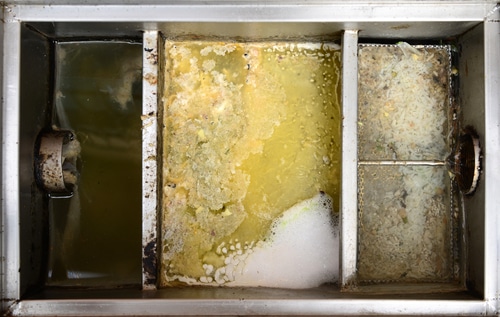Sump pumps are essential devices in many homes and properties to help prevent water damage caused by flooding, water seepage, and high water tables. As a family-owned and locally operated company, New Pro Plumbing has been providing personalized and affordable plumbing services in Los Angeles and the surrounding areas. With our vast knowledge and experience in residential and commercial plumbing services, we help clients make informed decisions about sump pumps, ensuring they obtain the best protection for their property.
In this comprehensive blog post, we will cover the basics of sump pumps, including:
1. Benefits of a Sump Pump: Learn about the importance of having a sump pump installed in your home or property, how it can prevent water damage, and improve the health and comfort of your living environment.
2. Types of Sump Pumps: Understand the difference between pedestal, submersible, battery backup, and combination sump pumps, along with their advantages and applications.
3. Sump Pump Installation Points: Familiarize yourself with crucial factors to consider during the installation process, including finding the right location, selecting the right pump capacity, and installing a backflow prevention system.
4. Maintaining Your Sump Pump: Discover the essential maintenance tips that will help prolong the lifespan of your sump pump, ensure its optimal performance, and minimize the potential for malfunctions.
5. When to Replace Your Sump Pump: Recognize the signs of a failing sump pump and learn when it’s time to consider replacing the unit.
By the end of this informative article, readers will have a thorough understanding of sump pump basics and the importance of these devices in protecting their homes and properties from potential water damage. They will be encouraged to seek assistance from New Pro Plumbing for any plumbing needs, particularly concerning sump pump installation and maintenance. Our team of dedicated professionals is here to help provide expert advice and ensure your home’s plumbing system remains in top condition.
I. Benefits of a Sump Pump: Protecting Your Property and Health
Installing a sump pump in your home can provide several advantages, including:
1. Prevent Water Damage: Sump pumps expel excess water from basements and crawl spaces, preventing damage to your home’s foundation, flooring, walls, and other structures.
2. Mitigate Mold and Mildew Growth: By reducing moisture in your basement or crawl space, sump pumps help prevent mold and mildew growth, which can exacerbate allergies and other respiratory issues.
3. Increase Property Value: A well-maintained sump pump can increase your property value, particularly in areas where flooding and water seepage are common concerns.
II. Types of Sump Pumps: Choosing the Right Solution
There are several types of sump pumps available on the market, each with its applications and advantages. Understanding these differences will help you select the best option for your situation:
1. Pedestal Sump Pumps: These pumps feature an upright design, with the motor mounted above the basin. Pedestal pumps are generally more affordable and easier to maintain than submersible pumps, but they may be less powerful and noisier.
2. Submersible Sump Pumps: Designed to operate while submerged in water, submersible pumps are usually quieter, more powerful, and more energy efficient than pedestal pumps. However, they may require more frequent maintenance and typically have a higher initial cost.
3. Battery Backup Sump Pumps: Equipped with a battery-powered backup system, these pumps continue to provide protection during power outages. While more expensive, a battery backup can be invaluable in areas prone to severe storms or frequent power outages.
4. Combination Sump Pumps: These units combine a primary pump and a battery backup pump in a single system, providing the best of both worlds. Combination pumps offer comprehensive protection and peace of mind but may come with a higher price tag.
III. Sump Pump Installation Points: Key Factors to Consider
Proper installation is crucial to ensure the optimal performance and reliability of your sump pump. Important factors to consider during the installation process include:
1. Location: The sump pump should be installed in the lowest part of your basement or crawl space, where water is most likely to accumulate.
2. Pump Capacity: Choose a sump pump with the appropriate capacity to efficiently handle the expected volume of water for your property.
3. Backflow Prevention: Installing a backflow prevention valve can help avoid the unwanted flow of water back into your sump pit, potentially damaging your pump or causing flooding.
4. Professional Assistance: Hiring an experienced plumber, like our team at New Pro Plumbing, will ensure your sump pump is correctly installed and functioning as intended, prolonging its lifespan and effectiveness.
IV. Maintaining Your Sump Pump: Ensuring Optimal Performance
Regular maintenance is essential for the longevity and reliable performance of your sump pump. The following maintenance tips will help keep your pump in excellent condition:
1. Inspect and Clean: Check your sump pump for any debris, dirt, or buildup that could hinder its operation, and clean the pump, pit, and surrounding area as needed.
2. Test the Pump: Periodically test your sump pump by pouring water into the pit, ensuring it activates and expels water efficiently.
3. Check the Electrical Components: Inspect all electrical connections for signs of damage, corrosion, or wear. Replace or repair any damaged components as necessary.
4. Replace the Backup Battery: If your pump has a battery backup, replace the battery according to the manufacturer’s recommendations, usually every 2-3 years.
V. When to Replace Your Sump Pump: Recognizing the Signs
Over time, all sump pumps will begin to show signs of wear and tear. Indications that your sump pump may need replacement include:
1. Frequent Cycling: A sump pump that cycles on and off frequently may be struggling with increased water volume or an incorrectly sized pump.
2. Excessive Noise: Unusually loud or strange noises may indicate a problem with the pump’s motor or impeller.
3. Persistent Malfunctions: If your sump pump continually malfunctions or fails, despite regular maintenance and repairs, it may be time to consider a replacement.
Conclusion
Understanding the basics of sump pumps, including their benefits, types, installation, and maintenance, is essential for protecting your property from potential water damage. By investing in the right solution and taking care of your sump pump, you can enjoy a safer, more comfortable living environment and preserve the value of your property.
For personalized assistance with all your plumbing needs, including sump pump installation and maintenance, contact New Pro Plumbing today. Our team of dedicated professionals is here to help you make the best decisions for your property, ensuring the highest levels of customer satisfaction and service.

















